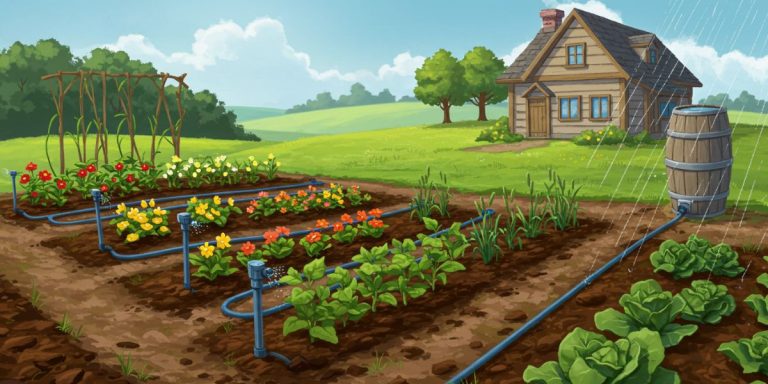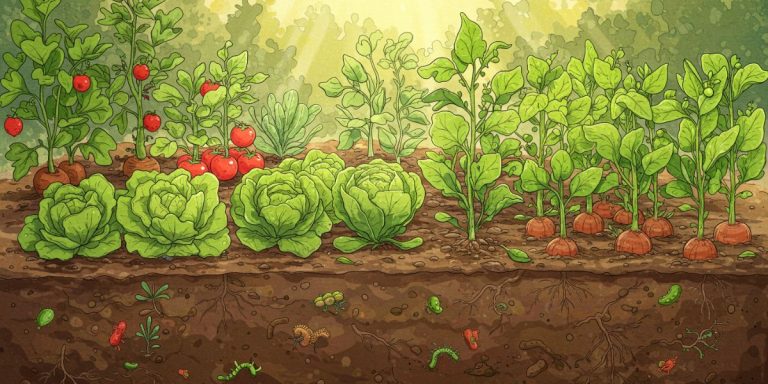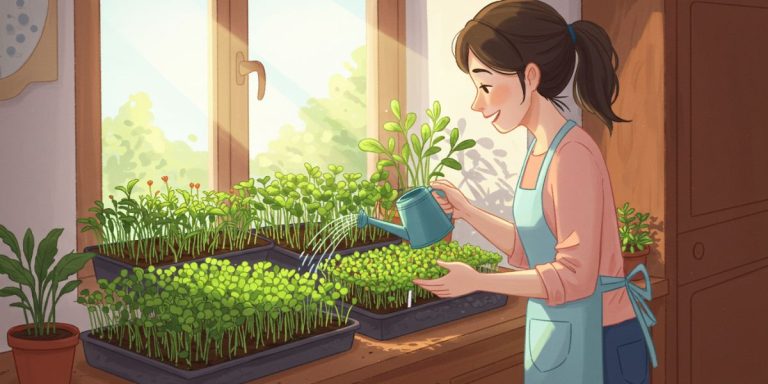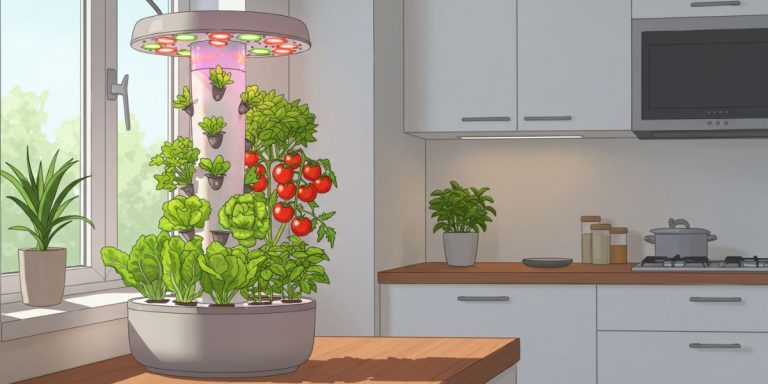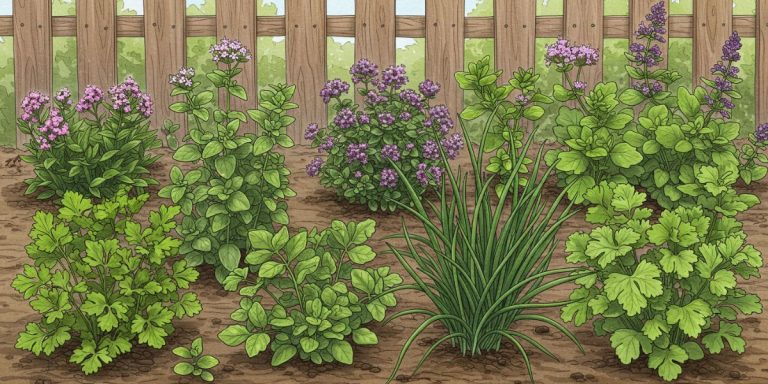15 Small Space Vegetable Garden Tips: Beginner’s Guide

Don’t let limited space stop you from growing your own food! This comprehensive guide will show you how to start a thriving small space vegetable garden, even if you think you don’t have room.
The Big Potential of Small Spaces
Many aspiring gardeners believe they need a large backyard to grow their own vegetables. The truth? You can create an abundant harvest from balconies, patios, windowsills, and tiny urban plots. A small space vegetable garden isn’t just possible—it can be incredibly productive and rewarding.
I remember growing up on a small corner lot in the city. We didn’t have a huge backyard, but my dad showed me it was enough room to grow what we loved (maybe this is where my potato obsession came from, lol).
Whether you’re in an apartment with just a sunny windowsill or a townhouse with a small patio, this guide will walk you through everything you need to know to start growing delicious, nutritious vegetables in your limited space.
Why Grow Your Own Vegetables in Small Spaces?
Before we dive into the how-to, let’s consider the many benefits of a small space vegetable garden:
- Fresh, nutritious produce: Vegetables begin losing nutrients as soon as they’re harvested. Growing your own ensures maximum nutrition and flavor.
- Cost savings: A well-planned container garden can produce hundreds of dollars worth of organic vegetables each season.
- Reduced environmental impact: Growing your own food reduces packaging waste and transportation emissions.
- Educational value: Perfect for teaching children where food comes from and basic plant science.
- Mental health benefits: Numerous studies show that gardening reduces stress and improves mood.
- Connection to seasonal rhythms: Gardening helps us reconnect with natural cycles in our increasingly digital world.
Part 1: Assessing Your Space
Evaluating Your Light Conditions
Before purchasing a single seed or container, take time to understand your space’s light conditions:
- Full sun (6+ hours of direct sunlight): Ideal for tomatoes, peppers, eggplants, and most fruiting vegetables
- Partial sun (4-6 hours): Good for leafy greens, herbs, and some root vegetables
- Partial shade (2-4 hours): Best for lettuce, spinach, kale, and other leafy greens
Use a notebook to track sunlight patterns in your space throughout the day. Remember that light conditions change seasonally—a south-facing balcony might be sunny in winter but partially shaded by trees in summer.
Pro Tip: Download a sun-tracking app on your smartphone to get precise measurements of your space’s sun exposure throughout the day and year.
Understanding Your Growing Zone
Your climate zone determines which plants will thrive and when to plant them:
- Find your USDA hardiness zone through the USDA website
- Download a local planting calendar specific to your region
- Consider microclimate factors (urban heat islands, wind exposure, nearby buildings)

Assessing Space Constraints and Opportunities
Beyond sunlight, evaluate your space’s unique characteristics:
Structural Considerations:
- Weight limits: Balconies and rooftops have maximum weight capacities—check building codes
- Water access: Proximity to water sources affects your watering routine
- Wind exposure: High-rise balconies may need windbreaks for sensitive plants
- Privacy regulations: Some HOAs or apartment complexes have restrictions on visible gardening
Space Opportunities:
- Vertical surfaces: Walls, fences, railings
- Overhead structures: For hanging planters
- Unutilized corners: Often perfect for tall, narrow planters
- Indoor/outdoor transition areas: Windowsills, doorways, stairwells
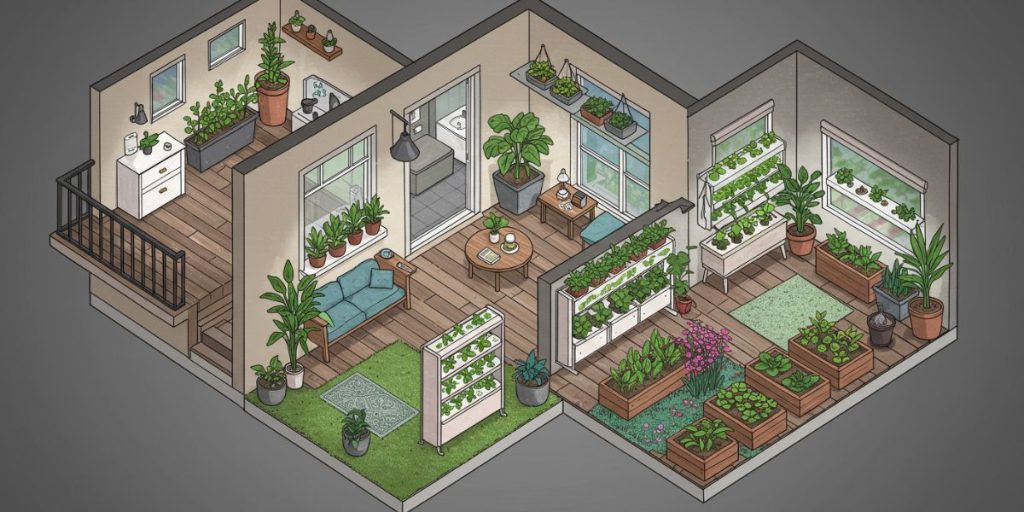
Part 2: Choosing Your Container System
Container Options for Small Spaces
The right containers make all the difference in small space gardening:
- Traditional pots and containers: Versatile but require adequate drainage
- Railing planters: Perfect for balconies, attach securely
- Vertical growing systems: Wall-mounted planters, pocket gardens, trellises
- Self-watering containers: Reduce maintenance and water usage
- Grow bags: Lightweight, inexpensive, and promote healthy root systems
- Upcycled containers: Repurposed buckets, totes, or wooden crates (ensure proper drainage)
When selecting containers, prioritize:
- Adequate drainage
- Appropriate depth for your chosen vegetables
- Durability for your climate
- Weight considerations (especially for balconies)

DIY Container Projects for Budget Gardeners
Save money while creating custom solutions for your space:
Simple Self-Watering Container:
- Take two same-sized plastic containers (one needs a lid)
- Cut a hole in the lid slightly larger than a plastic cup
- Place the cup in the hole and drill small holes in its bottom
- Drill drainage holes in the upper container about 1-2 inches from the bottom
- Place the upper container on the lid with the cup extending into the lower container
- Fill the lower container with water and the upper with soil
- The cup acts as a wick, delivering water to your plants as needed
Vertical Pallet Garden:
- Find a heat-treated (HT stamped) pallet
- Sand rough edges and optionally paint or seal (use garden-safe products)
- Staple landscape fabric to the back and bottom
- Stand upright against a wall and fill with potting mix
- Plant through the slats with shallow-rooted plants like lettuce, herbs, and strawberries
Soil Matters: Getting the Foundation Right
For container gardening, never use garden soil alone. Instead:
- Purchase quality potting mix specifically formulated for containers
- Consider mixes with water-retaining polymers for containers that dry quickly
- Add compost (about 25% of total volume) to improve soil structure and nutrients
- For heavy feeders like tomatoes, incorporate slow-release organic fertilizer at planting
Recipe for DIY Potting Mix:
- 60% high-quality potting soil
- 20% compost
- 10% perlite or vermiculite
- 10% coconut coir or peat moss
Advanced Soil Optimization:
- For leafy greens: Add extra nitrogen through blood meal or composted chicken manure
- For root vegetables: Increase phosphorus with bone meal and ensure loose texture with extra perlite
- For fruiting vegetables: Add balanced organic fertilizer and crushed eggshells for calcium
- For herbs: Leaner soil with less fertilizer produces more concentrated essential oils
Container Preparation Best Practices
Proper preparation prevents problems later:
- Drainage improvement: Add 1-2 inches of coarse material (pebbles, broken pottery) at container bottom
- Cleaning: Sanitize reused containers with 1:10 bleach solution to prevent disease
- Moisture retention layer: Place a layer of newspaper, coffee filters, or landscape fabric over drainage holes to prevent soil loss
- Pre-moistening soil: Thoroughly dampen potting mix before filling containers
- Mulching: Add a layer of mulch after planting to reduce evaporation
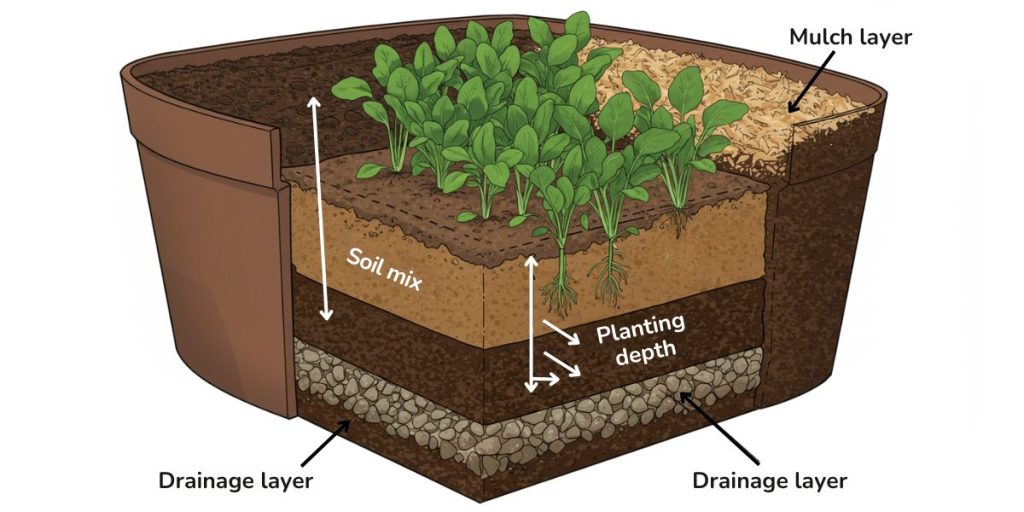
Part 3: Selecting the Right Vegetables for Small Spaces
Best Vegetables for Container Gardens
Not all vegetables perform equally in small spaces. Here are top performers:
Compact Varieties:
- Bush tomatoes (‘Tiny Tim’, ‘Patio Princess’, ‘Tumbling Tom’)
- Bush beans (‘Bush Blue Lake’, ‘Provider’, ‘Mascotte’)
- Mini bell peppers (‘Cute Stuff’, ‘Mini Belle’, ‘Sweet Sunset’)
- Compact zucchini (‘Eight Ball’, ‘Patio Star’, ‘Astia’)
Vegetables That Grow Vertically:
- Cucumbers (especially ‘Spacemaster’, ‘Bush Slicer’, ‘Picklebush’)
- Pole beans (‘Kentucky Wonder’, ‘Blue Lake’, ‘Rattlesnake’)
- Peas (‘Sugar Snap’, ‘Super Sugar Snap’, ‘Little Marvel’)
- Indeterminate tomatoes with proper support (‘Early Girl’, ‘Cherokee Purple’)
Quick-Growing Crops for Succession Planting:
- Lettuce (try cut-and-come-again varieties like ‘Salad Bowl’ or ‘Oakleaf’)
- Radishes (‘Cherry Belle’, ‘French Breakfast’, ‘Easter Egg’)
- Baby spinach and arugula (‘Space’, ‘Catalina’, ‘Astro’)
- Green onions/scallions (‘Parade’, ‘Tokyo Long White’)
Small Root Vegetables:
- Carrots (look for shorter varieties like ‘Paris Market’, ‘Thumbelina’, ‘Romeo’)
- Beets (‘Baby Ball’, ‘Baby Beats’, ‘Chioggia’)
- Radishes (‘Cherry Belle’, ‘French Breakfast’, ‘Easter Egg’)
- Turnips (‘Tokyo Cross’, ‘Hakurei’, ‘Market Express’)

Detailed Container Vegetable Profiles
Let’s look deeper at some container garden superstars:
Cherry Tomatoes
- Container size: Minimum 5-gallon pot, 12″ deep
- Spacing: One plant per container
- Water needs: Consistent moisture, never let dry out completely
- Sun requirements: Full sun (6+ hours)
- Days to harvest: 50-75 days depending on variety
- Container-friendly varieties: ‘Tiny Tim’, ‘Sungold’, ‘Sweet 100’
- Companion plants: Basil, marigolds, nasturtiums
- Special tips: Remove lower leaves to improve air circulation; may need supplemental calcium
Leafy Greens (Lettuce, Spinach, Kale)
- Container size: As shallow as 6″ deep
- Spacing: 4-6″ between plants
- Water needs: Consistent moisture, prefer cool, moist conditions
- Sun requirements: Part sun to part shade in hot climates
- Days to harvest: 21-50 days depending on variety and whether harvesting baby greens
- Container-friendly varieties: ‘Butter Crunch’, ‘Red Sails’, ‘Lacinato’ kale
- Companion plants: Chives, garlic, nasturtiums
- Special tips: Harvest outer leaves for continuous production; move to shadier spot during heat waves
Bush Beans
- Container size: 8″ deep minimum
- Spacing: 3-4″ between plants
- Water needs: Moderate, water when top inch of soil is dry
- Sun requirements: Full sun
- Days to harvest: 50-60 days
- Container-friendly varieties: ‘Bush Blue Lake’, ‘Mascotte’, ‘Provider’
- Companion plants: Carrots, radishes, marigolds
- Special tips: Harvest frequently to encourage production; avoid overhead watering to prevent disease
Compact Peppers
- Container size: 2-3 gallon pot, 12″ deep
- Spacing: One plant per container
- Water needs: Moderate, consistent but not waterlogged
- Sun requirements: Full sun
- Days to harvest: 60-90 days
- Container-friendly varieties: ‘Redskin’, ‘Sweet Banana’, ‘Cute Stuff’
- Companion plants: Basil, cilantro, onions
- Special tips: May need staking even with compact varieties; avoid excessive nitrogen
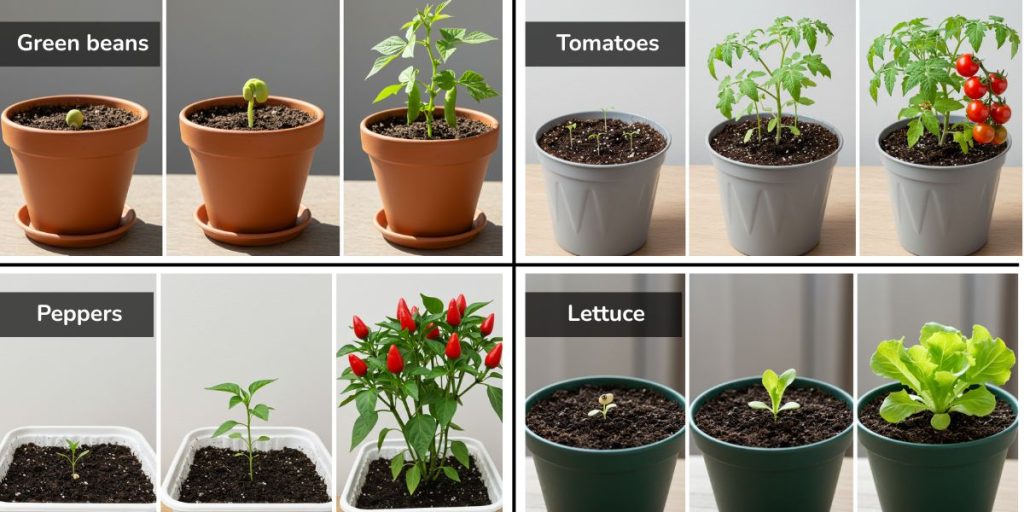
Plant Spacing in Containers
Container gardening allows for closer spacing than traditional garden beds. Follow these guidelines:
- Intense planting: Plant closer than recommended for garden beds, but ensure adequate airflow
- Companion planting: Combine plants that grow well together (like basil and tomatoes)
- Succession planting: As one crop finishes, immediately replace with another
Container Size Guidelines:
- Lettuce, herbs, radishes: 6-8 inches deep
- Bush beans, peppers: 8-10 inches deep
- Tomatoes, cucumbers, zucchini: 12+ inches deep
- Root vegetables: Depth should be at least 2 inches deeper than mature root length
Optimal Multi-Plant Container Combinations:
- Salad container: Lettuce varieties, arugula, spinach, and radishes
- Salsa container: Determinate tomato, jalapeño pepper, cilantro, and onions
- Herb container: Basil, parsley, chives, and thyme (keep aggressive herbs like mint separate)
- Three sisters container: Compact corn variety, bush beans, and small squash
Part 4: Essential Small Space Gardening Techniques
Vertical Gardening Strategies
Maximize your growing space by growing up instead of out:
- Trellises: Support vining crops like cucumbers, beans, and peas
- Cages: Perfect for indeterminate tomatoes and eggplants
- Wall-mounted systems: Living walls, pocket planters
- Tiered planters: Create levels for different crops
- String methods: For training plants upward using twine or netting
DIY Trellis Solutions:
- String trellis: Attach twine in grid pattern between two horizontal supports
- Bamboo teepee: Create a cone-shaped structure using bamboo poles tied at the top
- Repurposed materials: Old ladders, bed frames, or baby cribs can become garden trellises
- Tension rod trellis: Use tension rods inside window frames for indoor herb gardens
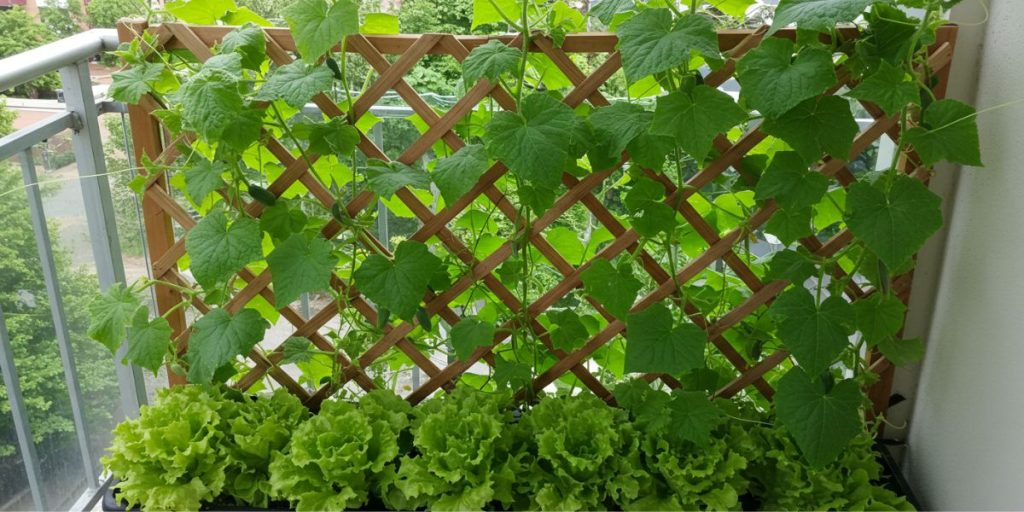
Square Foot Gardening for Small Spaces
Adapt square foot gardening principles for containers:
- Divide larger containers into square foot sections
- Follow square foot planting densities:
- Large plants (broccoli, peppers): 1 per square foot
- Medium plants (bush beans, spinach): 4-9 per square foot
- Small plants (radishes, carrots): 16 per square foot
Apply the Square Foot Method:
- Use string or thin wood to create a grid on your container
- Consider each square an individual growing area
- Plant appropriate number of seeds/seedlings in each square
- Maintain plants within their designated squares
- Replace harvested squares with new crops immediately
Maximizing Yields with Succession Planting
Keep your small space productive year-round:
- Quick succession: As soon as one crop is harvested, plant another
- Interplanting: Plant quick-growing crops between slower-developing ones
- Relay planting: Start new seedlings before older plants are finished
- Season extension: Use cloches, row covers, or container mobility to extend growing seasons
Sample Succession Plan for a Single Container:
- Early spring: Spinach and radishes
- Late spring: Remove spinach, plant bush beans
- Summer: Harvest beans, plant heat-loving herbs like basil
- Fall: Replace basil with kale or other cool-season greens
- Winter: Protect kale with cloche for extended harvest (or bring container inside)

Advanced Intensive Planting: The Three-Dimensional Garden
Think beyond horizontal space by layering plants vertically within the same container:
Layering Strategy:
- Upper layer: Tall plants or those growing on trellises (tomatoes, cucumbers)
- Middle layer: Bush-type plants that fill out the middle space (peppers, bush beans)
- Lower layer: Low-growing plants that spread across the soil surface (lettuce, spinach)
- Root layer: Root crops that utilize the soil depth (radishes, carrots)
Three-Dimensional Garden Example:
- Tomato plant (upper) with basil (middle) and lettuce (lower)
- Cucumber on trellis (upper) with bush beans (middle) and radishes (root)
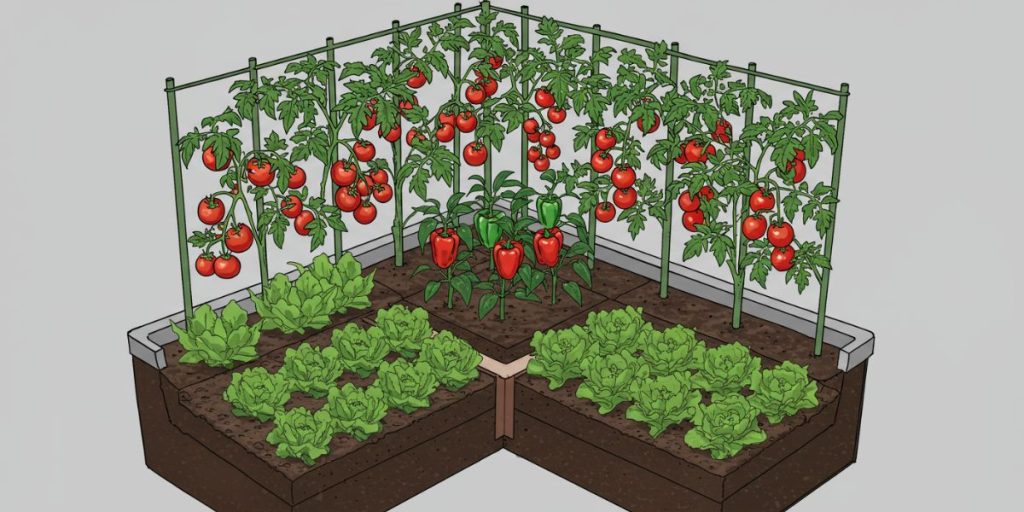
Part 5: Essential Small Space Vegetable Garden Care
Water Management in Container Gardens
Container gardens dry out faster than in-ground beds:
- Watering frequency: Most containers need checking daily during hot weather
- Self-watering systems: Consider DIY or purchased self-watering containers
- Moisture meters: Eliminate guesswork about when to water
- Mulching: Apply organic mulch to reduce evaporation
- Grouping containers: Create a microclimate that maintains humidity
- Morning watering: Reduces evaporation and fungal issues
Water-Saving Tips:
- Group plants with similar water needs
- Use saucers to catch excess water (but don’t let plants sit in water)
- Consider drip irrigation systems with timers
- Add water-retaining crystals or coconut coir to soil mix
- Use ollas (unglazed clay pots) buried in containers for slow-release watering
DIY Drip Irrigation System:
- Purchase inexpensive drip irrigation starter kit
- Connect to outdoor spigot with timer
- Run main line to container area
- Connect emitters for each container
- Set timer based on season and weather
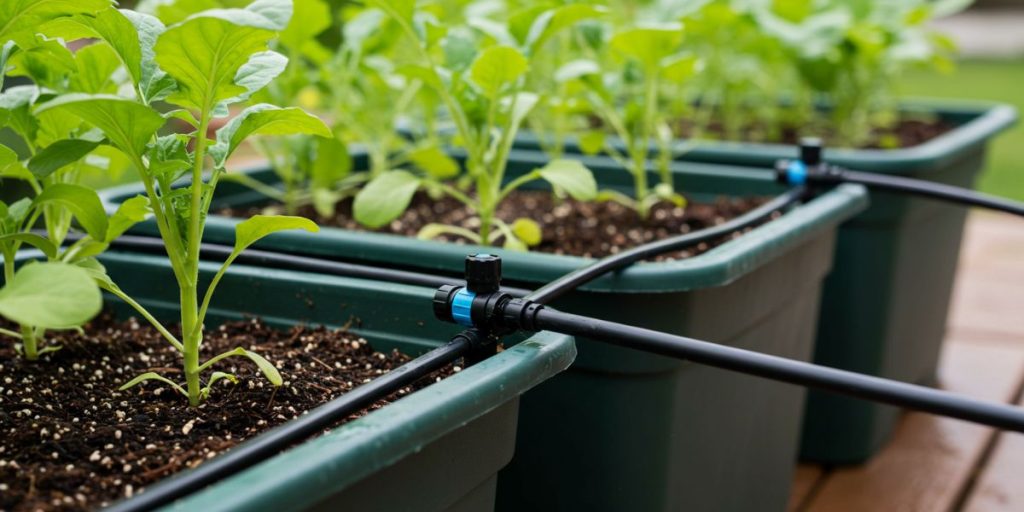
Fertilizing Container Vegetables
Container vegetables need more frequent feeding than garden-grown plants:
- Liquid fertilizers: Apply every 1-2 weeks at half strength
- Slow-release fertilizers: Apply once per season following package directions
- Compost tea: Natural option, apply every 2-3 weeks
- Top dressing: Add compost to the soil surface monthly
Making Compost Tea for Container Plants:
- Fill a cloth bag with finished compost (about 1 cup)
- Submerge in 1 gallon of water
- Let steep for 24-48 hours, stirring occasionally
- Use the resulting liquid to water plants
- Add the used compost to your garden or containers
Signs of Nutrient Deficiencies:
- Nitrogen deficiency: Overall yellowing of older leaves
- Phosphorus deficiency: Purple tint to leaves, poor flowering
- Potassium deficiency: Brown edges on older leaves
- Calcium deficiency: Blossom end rot, especially in tomatoes
- Magnesium deficiency: Yellowing between leaf veins
Pest Management in Small Spaces
Small gardens can actually be easier to monitor for pests:
- Daily inspection: Check leaves (top and bottom) for signs of pests
- Manual removal: In small spaces, hand-picking pests is often effective
- Beneficial insects: Introduce ladybugs or praying mantis
- Natural sprays: Neem oil, insecticidal soap, or DIY pepper sprays
- Companion planting: Intersperse pest-repelling herbs like basil and marigolds
Common Container Garden Pests and Solutions:
Aphids:
- Identification: Tiny green, black, or white insects clustered on new growth
- Prevention: Regular inspection, avoid excessive nitrogen
- Treatment: Strong water spray, insecticidal soap, neem oil, or releasing ladybugs
Spider Mites:
- Identification: Stippling on leaves, fine webbing, tiny moving dots
- Prevention: Maintain humidity, avoid drought stress
- Treatment: Increase humidity, insecticidal soap, horticultural oil
Slugs and Snails:
- Identification: Slime trails, chewed leaves with irregular holes
- Prevention: Copper tape around containers, morning watering
- Treatment: Handpicking, beer traps, diatomaceous earth barrier
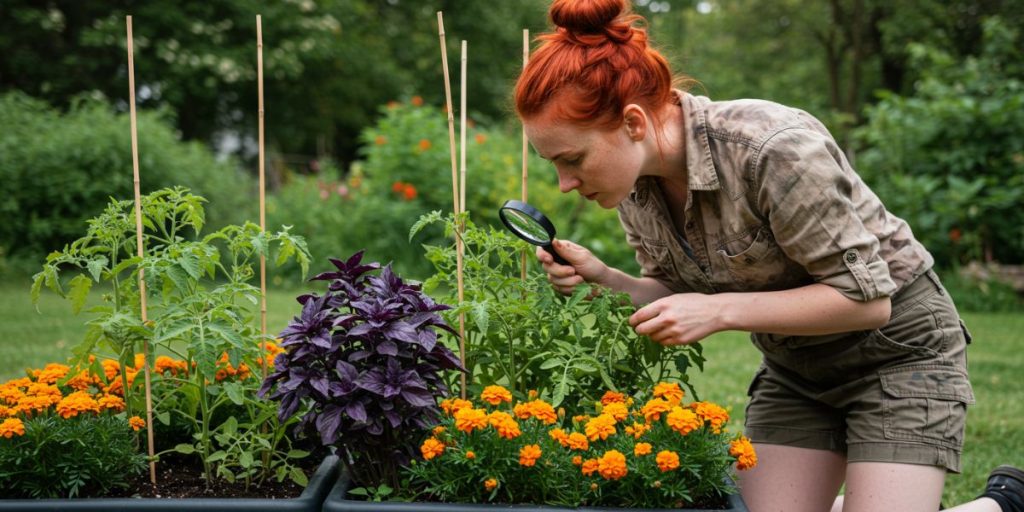
A magnifying glass was my best friend last summer because some of those pesky insects are very hard to see!
Disease Prevention in Container Gardens
Container vegetables can suffer from various diseases, but prevention is easier than cure:
Preventative Strategies:
- Proper spacing: Ensure adequate airflow between plants
- Morning watering: Allows foliage to dry before evening
- Soil-level watering: Avoid wetting foliage when possible
- Crop rotation: Even in containers, don’t plant same family in same soil year after year
- Clean tools: Sanitize pruners between plants
- Remove debris: Clear fallen leaves and plant material promptly
Common Container Plant Diseases:
Powdery Mildew:
- Identification: White powdery substance on leaves
- Prevention: Good air circulation, full sun exposure when possible
- Treatment: Baking soda spray (1 tbsp baking soda, 1 tsp mild soap, 1 gallon water)
Blight (Early and Late):
- Identification: Dark spots on leaves, stems, or fruit
- Prevention: Resistant varieties, avoid overhead watering
- Treatment: Remove affected areas, copper fungicide for severe cases
Root Rot:
- Identification: Wilting despite moist soil, blackened roots
- Prevention: Proper drainage, avoid overwatering
- Treatment: Repot in fresh soil after trimming affected roots
Part 6: Harvesting and Maintaining Your Small Space Vegetable Garden
Harvesting for Continued Production
Proper harvesting techniques encourage continued production:
- Harvest leafy greens by taking outer leaves and allowing centers to continue growing
- Pick beans, peas, and cucumbers frequently to stimulate more flowering
- Cut herbs regularly to promote bushy growth
- Harvest root vegetables when they reach usable size, not necessarily maximum size
Harvesting Tips by Vegetable Type:
Leafy Greens:
- Harvest outer leaves when they reach 3-4 inches
- For head lettuce, harvest entire plant by cutting at soil level
- For spinach and other cut-and-come-again greens, cut 1 inch above soil line
Herbs:
- Harvest up to ⅓ of the plant at one time
- For basil, pinch just above a leaf node to encourage branching
- Harvest herb flowers to prevent plants from going to seed (unless saving seeds)
Fruiting Vegetables:
- Harvest tomatoes when fully colored but still firm
- Pick cucumbers when young and tender (typically 6-8 inches)
- Harvest peppers green or wait for full color, depending on preference
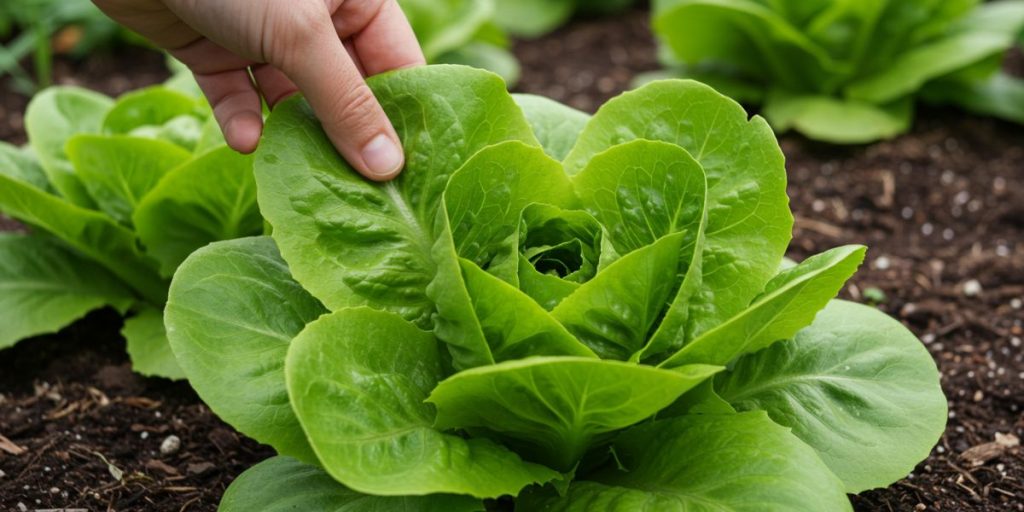
Preserving Small Harvests
Even small-space vegetable gardens can produce enough for preserving:
Small-Batch Preserving Methods:
- Refrigerator pickles: No canning required, store in refrigerator for up to 3 months
- Herb preservation: Freeze in ice cube trays with olive oil or water
- Sun-dried tomatoes: Dry small cherry tomatoes in dehydrator or oven
- Frozen vegetables: Blanch and freeze in small portions
- Herb-infused vinegars and oils: Beautiful gifts from your garden
Quick Refrigerator Pickle Recipe:
- Pack cucumber slices, garlic, and dill into clean jar
- Mix 1 cup vinegar, 1 cup water, 1 tbsp salt, and 2 tbsp sugar
- Heat liquid mixture until salt and sugar dissolve
- Pour over cucumbers, seal, and refrigerate
- Ready to eat in 24 hours, keeps for months in refrigerator
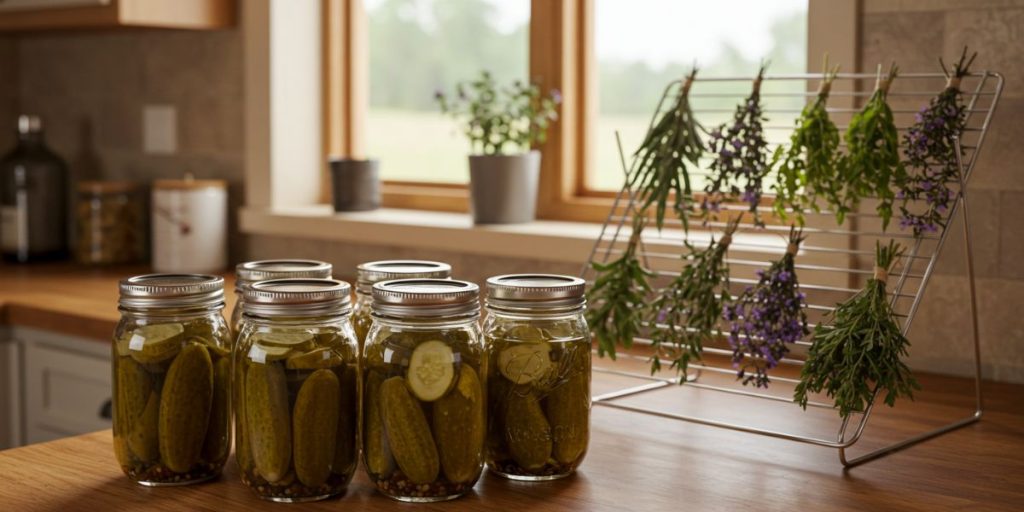
Seasonal Transitions
Plan for season changes to maintain productivity:
- Replace cool-season crops with heat-lovers as temperatures rise
- Start seeds indoors for the next season while current crops are finishing
- Have season extension tools ready for unexpected temperature changes
- Consider portable containers that can be moved to protected areas during extreme weather
Seasonal Transition Schedule:
Spring to Summer:
- Replace spinach, peas, and radishes with heat-loving crops
- Add shade cloth for lettuce to extend season
- Begin hardening off tomato and pepper seedlings
Summer to Fall:
- Start cool-season seedlings indoors in late summer
- Remove exhausted summer crops gradually
- Plant quick-growing crops for fall harvest
Fall to Winter:
- Add cold frames or row covers to extend harvest
- Move containers to protected areas near building walls
- Consider bringing select containers indoors near bright windows
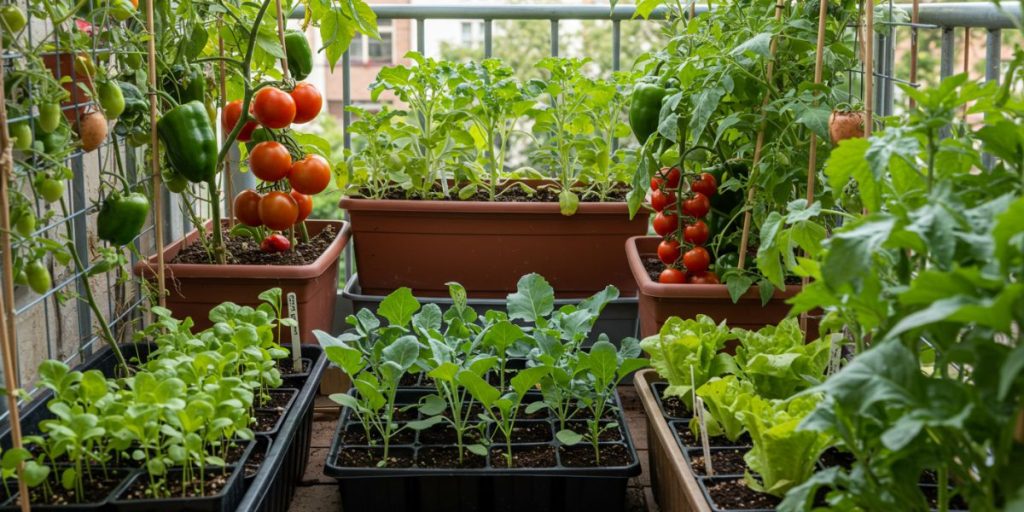
Container Garden Winter Care
Prepare your containers for winter to ensure longevity:
For Frost-Hardy Plants:
- Group containers together against a wall for protection
- Add mulch layer to insulate soil
- Cover with row cover during extreme cold
- Water occasionally during dry periods (when not frozen)
For Empty Containers:
- Clean thoroughly with 10% bleach solution
- Store ceramic or terracotta containers indoors to prevent cracking
- Cover plastic containers to prevent UV degradation
- Store soil in sealed containers for next season
Winter Growing Possibilities:
- Cold-tolerant crops like kale, spinach, and certain lettuce varieties
- Indoor container herbs on sunny windowsills
- Microgreens and sprouts grown indoors
- Window boxes with cold-tolerant ornamental kale and edible herbs
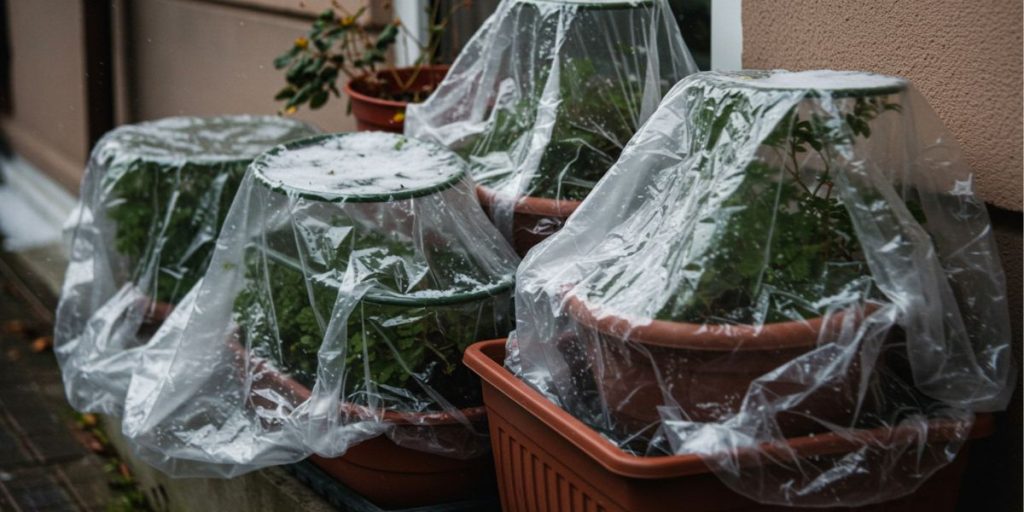
Part 7: Troubleshooting Common Container Garden Problems
Diagnosing Plant Issues
Common problems in container vegetable gardens and solutions:
Yellowing leaves:
- Possible causes: Overwatering, nutrient deficiency, or insufficient light
- Solutions: Adjust watering schedule, apply appropriate fertilizer, relocate if possible
Leggy seedlings:
- Possible causes: Insufficient light, overcrowding
- Solutions: Provide grow lights, thin plants, rotate containers regularly
Blossom drop:
- Possible causes: Temperature extremes, irregular watering, insufficient pollination
- Solutions: Protect from temperature extremes, maintain consistent moisture, hand pollinate if necessary
Stunted growth:
- Possible causes: Insufficient container size, poor soil, root binding
- Solutions: Transplant to larger containers, improve soil quality, check for root issues
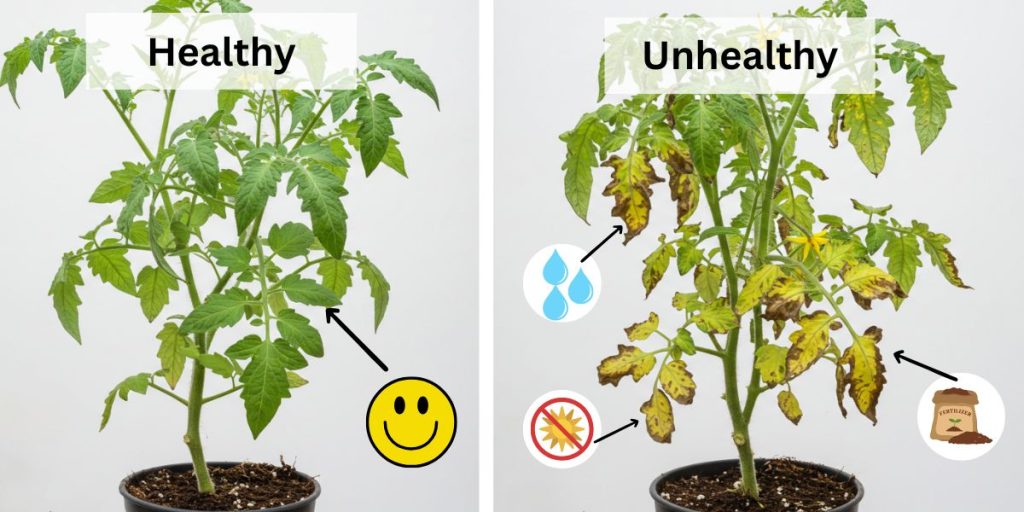
Advanced Troubleshooting Guide
Poor Fruit Production:
- Symptoms: Plants grow well but produce few flowers or fruits
- Possible causes: Excessive nitrogen, insufficient pollinators, temperature stress
- Solutions: Switch to bloom-boosting fertilizer (higher phosphorus), hand pollinate, provide temperature protection
Container Soil Degradation:
- Symptoms: Water runs straight through without being absorbed, soil pulls away from container sides
- Possible causes: Hydrophobic soil from complete drying out, depletion of organic matter
- Solutions: Thoroughly rehydrate by soaking in water basin, add worm castings and compost
Leaf Distortion or Unusual Patterns:
- Symptoms: Curling, puckering, or mosaic patterns on leaves
- Possible causes: Viral infection, herbicide exposure, pest damage
- Solutions: Remove severely affected plants, isolate suspicious plants, avoid using lawn herbicides near gardens
Transplant Shock:
- Symptoms: Wilting, yellowing, dropped leaves after transplanting
- Possible causes: Root damage, environmental stress, improper hardening off
- Solutions: Shade plants temporarily, maintain consistent moisture, trim some foliage to reduce transpiration

Container Garden Emergency Interventions
When immediate action is needed:
Heat Wave Protocol:
- Move containers to shadier locations
- Add temporary shade cloth
- Water twice daily, focusing on soil not leaves
- Add mulch layer if not already present
- Mist around plants to increase humidity
Recovery After Neglect:
- For dry containers: Submerge entire container in water until bubbles stop
- For overwatered plants: Move to bright, warm location and withhold water
- For severely damaged plants: Trim back to healthy growth and treat as cuttings
- For pest infestations: Immediate isolation and treatment
Saving Crops from Frost:
- Cover with sheets, blankets, or specialized frost cloth
- Move containers against building walls or under eaves
- Place jugs of warm water near plants overnight
- Add holiday lights under covering for gentle heat source
- Harvest sensitive crops before frost arrives
Part 8: Designing a Beautiful and Functional Small Space Vegetable Garden
Aesthetic Container Combinations
Create gardens that are both beautiful and productive:
Design Principles:
- Use “thriller, filler, spiller” concept—tall focal plant, medium plants to fill space, trailing plants for edges
- Group containers of varying heights for visual interest
- Consider color combinations of both containers and plants
- Include flowering herbs and edible flowers for beauty and function
Edible Ornamental Combinations:
- Mediterranean container: Rosemary (thriller), compact pepper (filler), oregano (spiller)
- Salad bowl planter: Tall lettuce varieties (thriller), colorful radishes (filler), nasturtiums (spiller)
- Pizza garden: Cherry tomato (thriller), basil (filler), thyme (spiller)
- Asian cuisine container: Lemongrass (thriller), Thai basil (filler), regular basil (spiller)
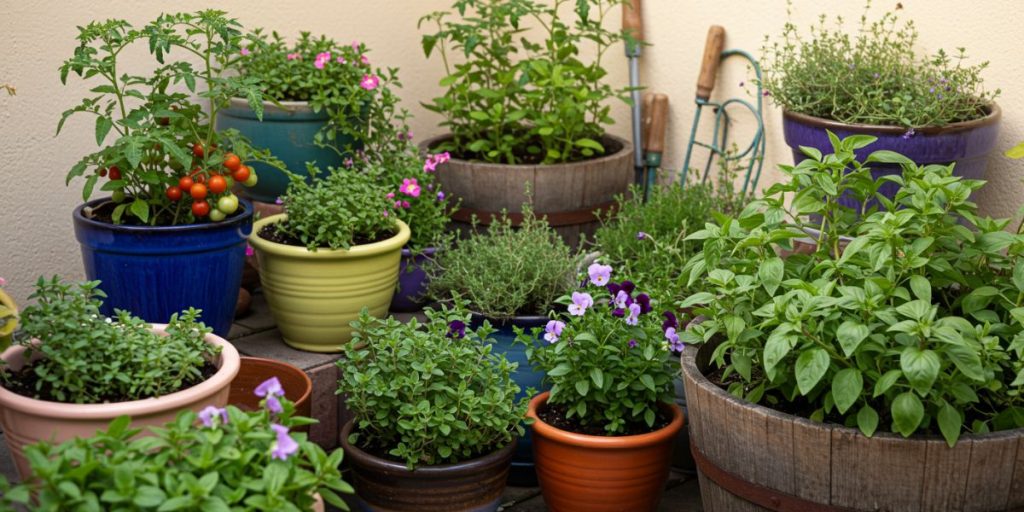
Creative Small Space Garden Designs
The Urban Patio Oasis:
- Utilize perimeter with railing planters
- Create privacy screen with trellised vegetables
- Central dining area surrounded by food plants
- Overhead hanging baskets for herbs
The High-Rise Window Farm:
- Indoor/outdoor windowsill system
- Suction cup window planters for herbs
- Vertical hydroponic system for lettuce
- Self-watering containers for maintenance during workweek
The Edible Balcony:
- Lightweight growing systems (grow bags, plastic containers)
- Vertical wall systems for maximum use of space
- Movable containers to adjust for seasonal sun changes
- Wind protection systems for exposed locations
- Disguised rainwater collection system
- Fold-down potting table for maintenance tasks
- Multi-tiered plantings working with sun patterns

Part 9: Small Space Vegetable Garden Tools and Equipment
Essential Tools for Container Gardeners
Quality tools make container gardening more enjoyable and efficient:
Must-Have Basics:
- Hand trowel: For planting, transplanting, and soil work
- Hand pruners: For harvesting and pruning
- Watering can with rain spout: For precise watering
- Soil scoop: For filling containers without waste
- Small hand fork: For loosening soil and weeding
- Spray bottle: For foliar feeding and pest management
Space-Saving Storage Solutions:
- Wall-mounted tool organizers
- Multi-function tools with interchangeable heads
- Collapsible watering cans
- Storage bench with hidden compartments
- Hanging tool storage bags

Smart Technology for Small Space Gardens
Modern technology can enhance your container gardening success:
Helpful Smart Garden Tech:
- Self-watering systems: WiFi-connected irrigation on timers
- Soil moisture sensors: Alert when watering is needed
- Weather station integrations: Adjust care based on local conditions
- Plant identification apps: Identify pests and diseases quickly
- Garden planning software: Optimize small space arrangements
Low-Tech but Smart Solutions:
- Water gauges: Simple devices showing soil moisture levels
- Rain collection systems: Converting downspouts to garden water sources
- DIY automatic watering systems: Using recycled bottles as slow-release reservoirs
- Humidity trays: Maintaining moisture levels for sensitive plants

Part 10: Special Small Space Gardens for Specific Needs
Salad Gardens: Fresh Greens Year-Round
Create a dedicated salad garden for continuous harvests:
Key Components:
- Focus on cut-and-come-again varieties
- Succession planting every 2-3 weeks
- Shade cloth for summer production
- Season extension with cloches for winter
Recommended Plants:
- Lettuce: ‘Salad Bowl’, ‘Red Sails’, ‘Buttercrunch’
- Asian greens: Mizuna, tatsoi, baby bok choy
- Spicy additions: Arugula, mustard greens, cress
- Edible flowers: Nasturtiums, borage, pansies
- Fresh herbs: Parsley, chives, dill
Maintenance Schedule:
- Daily: Check moisture, harvest as needed
- Weekly: Plant new seeds, thin seedlings
- Monthly: Replace exhausted plants, refresh soil
- Seasonally: Adjust light conditions, apply organic fertilizer
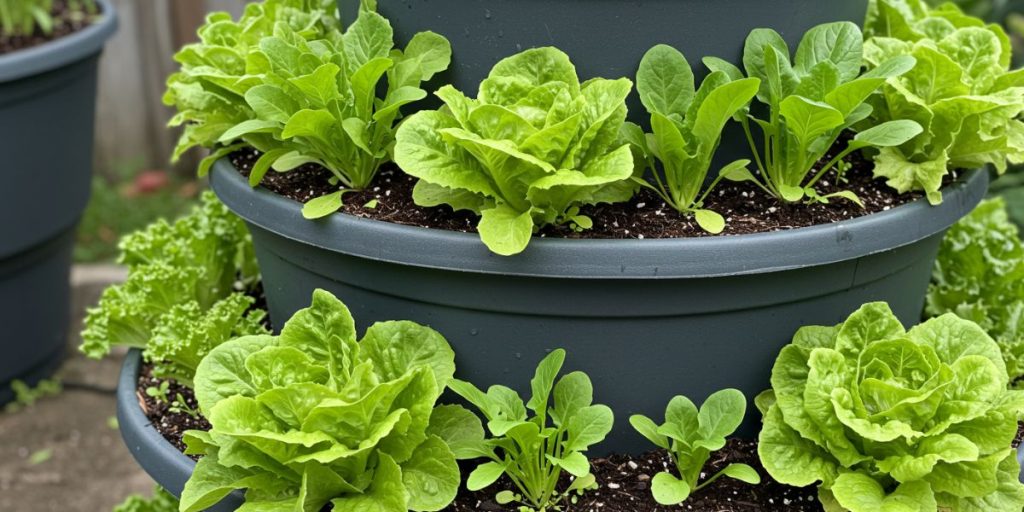
Herb Gardens: Maximum Flavor in Minimal Space
Herbs are perfect for small space gardens:
Container Selection for Herbs:
- Window boxes for kitchen herbs
- Vertical pocket planters for variety
- Hanging baskets for trailing herbs
- Tiered planters for maximum variety
Plant Selection Strategy:
- Group herbs with similar water and light requirements
- Separate aggressive spreaders like mint and oregano
- Consider both culinary and medicinal herbs
- Include perennial and annual varieties
Best Small-Space Herbs:
- Compact varieties: Spicy Globe basil, Greek oregano
- Multiple harvests: Cilantro, parsley, chives
- Dual-purpose herbs: Lavender (culinary and aromatic)
- Visual appeal: Purple basil, variegated sage, golden thyme
Creative Herb Garden Ideas:
- Pizza herb garden (oregano, basil, thyme)
- Tea garden (mint, lemon balm, chamomile)
- Cocktail garden (mint, rosemary, lavender)
- Medicinal herb garden (echinacea, calendula, lemon balm)
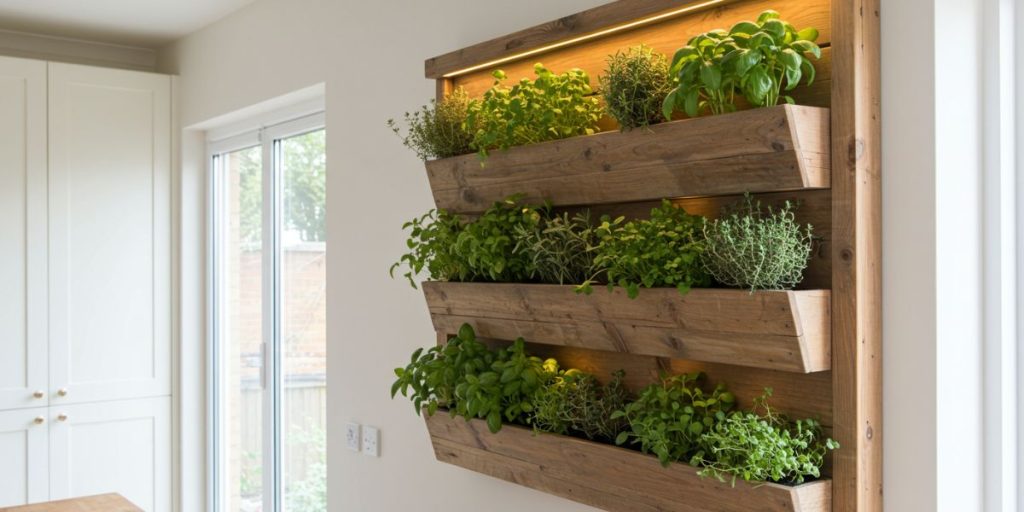
Pollinator Gardens: Supporting Beneficial Insects
Even small gardens can support important pollinators:
Benefits of Attracting Pollinators:
- Improved fruit set on vegetables
- Natural pest control
- Increased biodiversity
- Educational opportunities
- Beauty and garden interest
Pollinator-Friendly Vegetables and Herbs:
- Allow some plants to flower (basil, cilantro, dill)
- Plant native flowering herbs (bee balm, anise hyssop)
- Include edible flowers (nasturtiums, calendula, borage)
- Choose single-flowered varieties over doubles
Creating Pollinator Habitat:
- Provide shallow water dishes with landing spots
- Leave some bare soil for ground-nesting bees
- Include various flower shapes and sizes
- Avoid pesticides, even organic ones
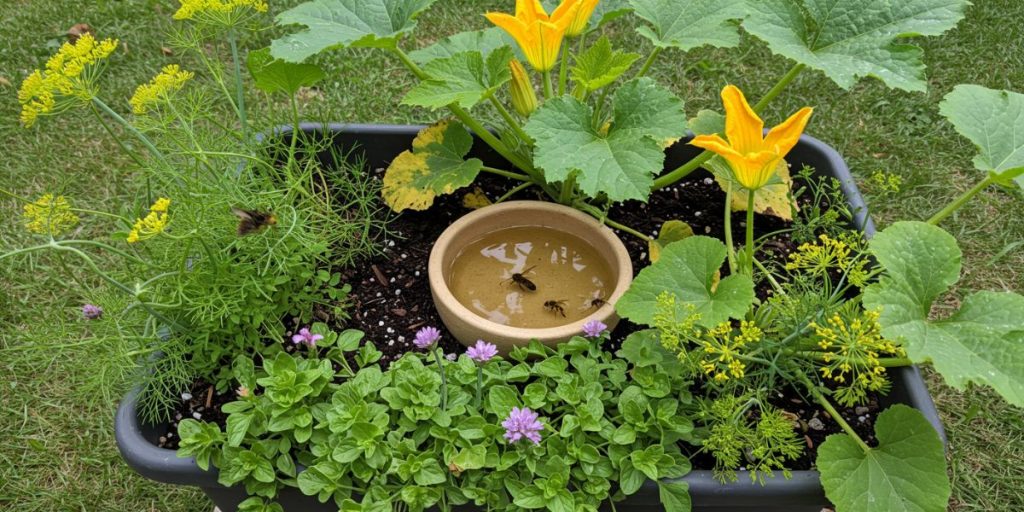
Part 11: Small Space Vegetable Garden for Specific Living Situations
Apartment Balcony Vegetable Gardens
Creating productive gardens in highly limited spaces:
Weight Considerations:
- Check building codes for weight restrictions
- Choose lightweight containers (plastic, fabric)
- Use lightweight growing media (add perlite or vermiculite)
- Position heavier containers near load-bearing walls
Privacy Regulations:
- Review HOA or apartment rules regarding visible gardens
- Consider decorative containers that blend with architecture
- Use attractive trellises that enhance rather than detract
- Create contained, tidy growing areas
Balcony Microclimates:
- High-rise wind challenges and solutions
- Heat reflection from building surfaces
- Privacy walls creating shade patterns
- Water drainage considerations for neighbors below
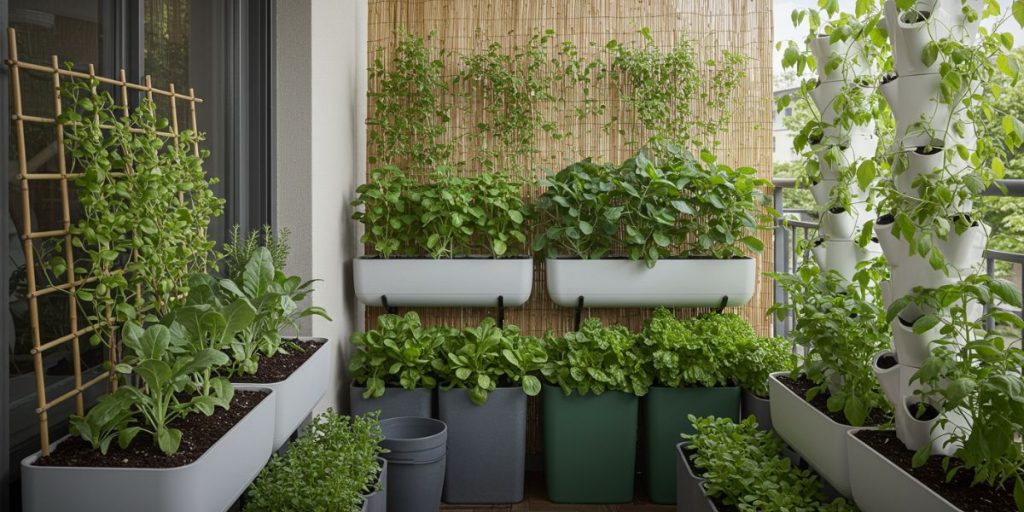
Indoor Vegetable Growing Solutions
Bring food production inside with these techniques:
Window Garden Essentials:
- South-facing windows for best results
- Supplemental grow lights for winter months
- Humidity trays to counteract dry indoor air
- Airflow considerations for plant health
Best Indoor Edibles:
- Microgreens (ready in 7-14 days)
- Sprouts (no soil required)
- Herbs (basil, parsley, mint)
- Dwarf pepper varieties
- Compact lettuce and greens
- “Micro” tomato varieties
Indoor Growing Systems:
- Windowsill container gardens
- Countertop hydroponic units
- Vertical wall gardens with grow lights
- Indoor self-watering containers

Rooftop Gardens: Special Considerations
Utilizing rooftops for food production:
Structural Requirements:
- Professional assessment of weight capacity
- Waterproof membrane protection
- Wind resistance strategies
- Accessibility considerations
Environmental Challenges:
- Extreme sun exposure management
- Wind protection systems
- Rainwater collection optimization
- Heat management with reflective containers
Rooftop-Friendly Systems:
- Lightweight green roof modular systems
- Self-watering containers with reservoirs
- Wind-resistant trellising
- Community garden plots for shared spaces

Part 12: Growing a Small Space Vegetable Garden in All Seasons
Season Extension Techniques for Containers
Extend your growing season beyond typical frost dates:
Spring Season Extension:
- Start seeds indoors under grow lights
- Use cloches or mini hoop tunnels over containers
- Apply horticultural fleece during cold nights
- Position containers against south-facing walls
Fall Season Extension:
- Cold frames around containers
- Floating row covers for frost protection
- Water walls for thermal mass
- Container mobility to follow sun patterns
DIY Cold Frame for Containers:
- Build simple box from wood or repurpose old windows
- Create hinged top for ventilation
- Place containers inside during cold weather
- Monitor temperature and vent on sunny days
Related Post: For a much more detailed read on growing food all year long, check out my article on year-round gardening.

Winter Growing in Small Spaces
Continue growing your small space vegetable garden through winter with these techniques:
Outdoor Winter Crops:
- Kale varieties (‘Winterbor’, ‘Red Russian’)
- Spinach (‘Winter Bloomsdale’, ‘Giant Winter’)
- Mâche/corn salad
- Carrots for winter harvest (plant late summer)
- Garlic and perennial onions
Protection Strategies:
- Cluster containers near building for warmth
- Insulate container sides with bubble wrap or foam
- Apply thick mulch layer around plants
- Provide wind protection with temporary walls
Indoor Winter Production:
- Microgreens under grow lights
- Sprouts in kitchen sprouting jars
- Windowsill herbs
- Dwarf vegetables under grow lights
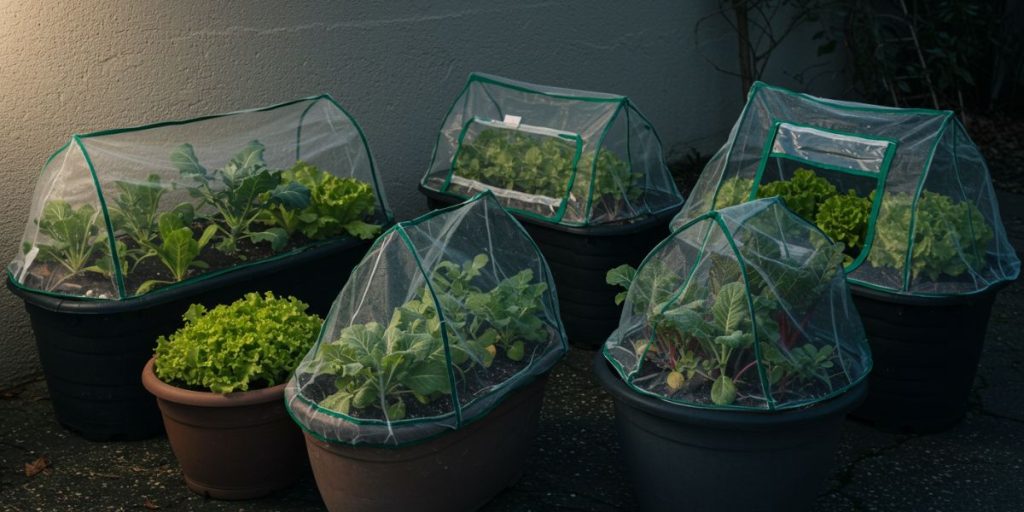
Part 13: Case Studies: Successful Small Space Gardens
Urban Balcony Transformation: 50 Square Feet to 200 Pounds of Produce
The Space:
- 5′ x 10′ apartment balcony
- 6 hours of direct sunlight
- Weight restrictions in building code
The Solutions:
- Vertical growing systems on all railings
- Lightweight container mix with added perlite
- Intensive companion planting
- Season extension with mini greenhouses
The Results:
- Over 200 pounds of produce in one season
- Continuous harvest of salad greens for 9 months
- 15 varieties of vegetables grown
- Total setup cost under $300
Key Takeaways:
- Vertical growing doubled productive space
- Succession planting kept space continuously productive
- Careful crop selection maximized yield per square foot
- Lightweight strategies addressed building restrictions
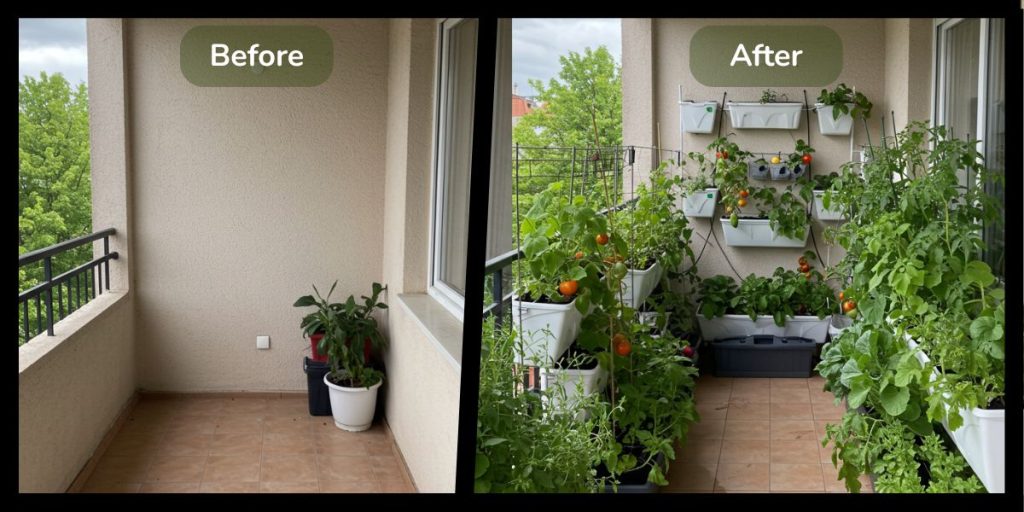
Window Farm Success: Indoor Year-Round Production
The Space:
- Three south-facing windows in urban apartment
- No outdoor growing space
- Limited time for maintenance
The Solutions:
- Window-mounted hydroponic units
- LED grow light supplements during winter
- Automatic watering system on timer
- Focus on high-value crops (herbs and greens)
The Results:
- Fresh salad greens year-round
- Never purchased herbs from grocery store
- System paid for itself in 6 months of grocery savings
- Minimal pest problems with proactive management
Key Takeaways:
- Simple technology made maintenance manageable
- Focusing on expensive grocery items maximized value
- Indoor growing eliminated seasonal limitations
- Hydroponics solved soil weight and mess concerns
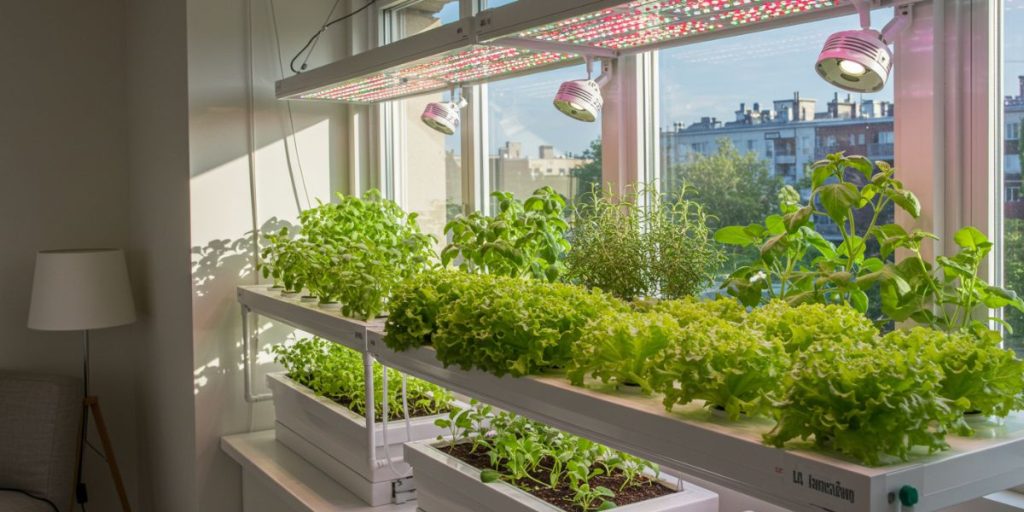
Part 14: Economic Benefits of a Small Space Vegetable Garden
Cost Analysis: Investment vs. Return
Understanding the financial benefits of growing your own:
Initial Investment Considerations:
- Containers ($5-$30 each, depending on size/quality)
- Quality potting mix ($10-15 per large bag)
- Seeds and seedlings ($2-5 per variety)
- Basic tools ($30-50 for essentials)
- Water costs (varies by region)
Potential Returns:
- Organic salad greens: $5-8 per week from one container
- Fresh herbs: $3-4 per bunch, multiple harvests per season
- Tomatoes: $15-20 worth from one plant over a season
- Bell peppers: $2-3 per pepper, multiple per plant
- Reduced food waste (harvest as needed)
Break-Even Analysis:
- Average container setup: $20-40 total
- Typical production value: $50-100 per container per season
- Most containers break even within the first season
- Multi-year containers deliver significant ROI
Budget-Friendly Small Space Gardening
Maximize returns while minimizing costs:
Money-Saving Container Options:
- Repurposed buckets (food-grade only)
- Grow bags made from landscape fabric
- Self-made wooden containers from pallets
- Community container sharing programs
Budget Soil Strategies:
- Bulk purchasing with neighbors
- Making your own potting mix
- Compost from kitchen scraps
- Vermicomposting for free fertilizer
Maximum Value Crops:
- Focus on expensive grocery items (fresh herbs, specialty greens)
- Quick-growing crops with multiple harvests
- Long-producing plants (indeterminate tomatoes, peppers)
- Crops that store well or can be preserved

Part 15: Community Building Through Small Space Gardening
Sharing and Trading in Urban Settings
Connect with others through your garden’s abundance. You can produce enough food with a small space vegetable garden to make a difference in your community.
Container Garden Sharing Strategies:
- Community planting days to share soil and supplies
- Seed and seedling swaps before planting season
- Harvest trades to increase variety
- Tool sharing programs
Community Building Ideas:
- Balcony-to-balcony growing connections
- Social media groups for urban gardeners
- Skills sharing workshops
- Community seed libraries
Beginning a Neighborhood Growing Network:
- Start with simple plant swap
- Create online group for local gardeners
- Organize seasonal meetups
- Develop shared resource library
Teaching Others Through Your Small Space Vegetable Garden
Use your garden as an educational tool:
Children’s Education Opportunities:
- Container design specifically for little helpers
- Quick-growing plants for immediate gratification
- Educational signage and plant markers
- Sensory elements (touch, taste, smell)
Sharing Knowledge:
- Hosting mini-workshops
- Creating garden journals to document successes
- Developing simple how-to guides
- Starting social media accounts to document progress

Conclusion: Your Small Space Vegetable Garden Journey
Starting small is actually advantageous for beginning gardeners. You’ll learn fundamental gardening skills while experiencing the joy of growing your own food—all without being overwhelmed by a large garden’s demands.
Remember these key takeaways:
- Small spaces can be incredibly productive with the right planning
- Vertical growing maximizes limited space
- Quality potting mix and proper containers set you up for success
- Regular care and observation prevent most problems
- Even the smallest harvest is a success worth celebrating
Your small space vegetable garden journey will evolve with each season as you discover what grows best in your specific conditions. Start today with just one container of your favorite vegetable, and watch your gardening confidence—and harvest—grow.
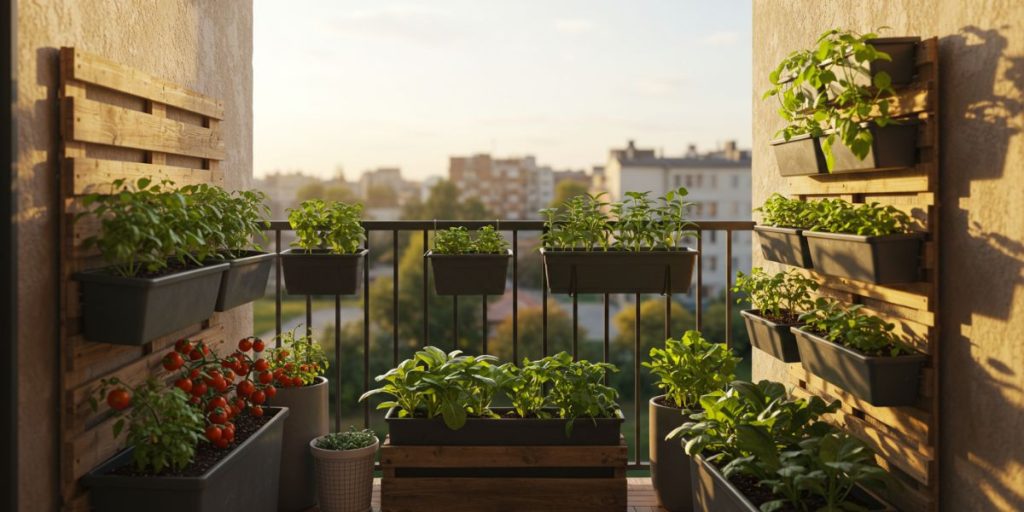
Resources for Creating a Small Space Vegetable Garden
Recommended Books:
- “Vertical Vegetables” by Amy Andrychowicz
- “Container Vegetable Gardening” by Liz Dobbs
- “The Vegetable Gardener’s Container Bible” by Edward C. Smith
- “Small-Space Vegetable Gardens” by Andrea Bellamy
- “Grow All You Can Eat in 3 Square Feet” by DK Publishing
Online Resources:
- Your local agricultural extension service website
- National Gardening Association
- Epic Gardening YouTube channel and website
- Apartment Homesteader blog
- The Spruce: Container Gardening section
Local Resources:
- Community garden organizations
- Master Gardener programs
- Local garden centers with container gardening workshops
- Urban agriculture nonprofits
- Cooperative extension service
Start your small space vegetable garden today, and discover just how much food you can grow in even the tiniest spaces!


